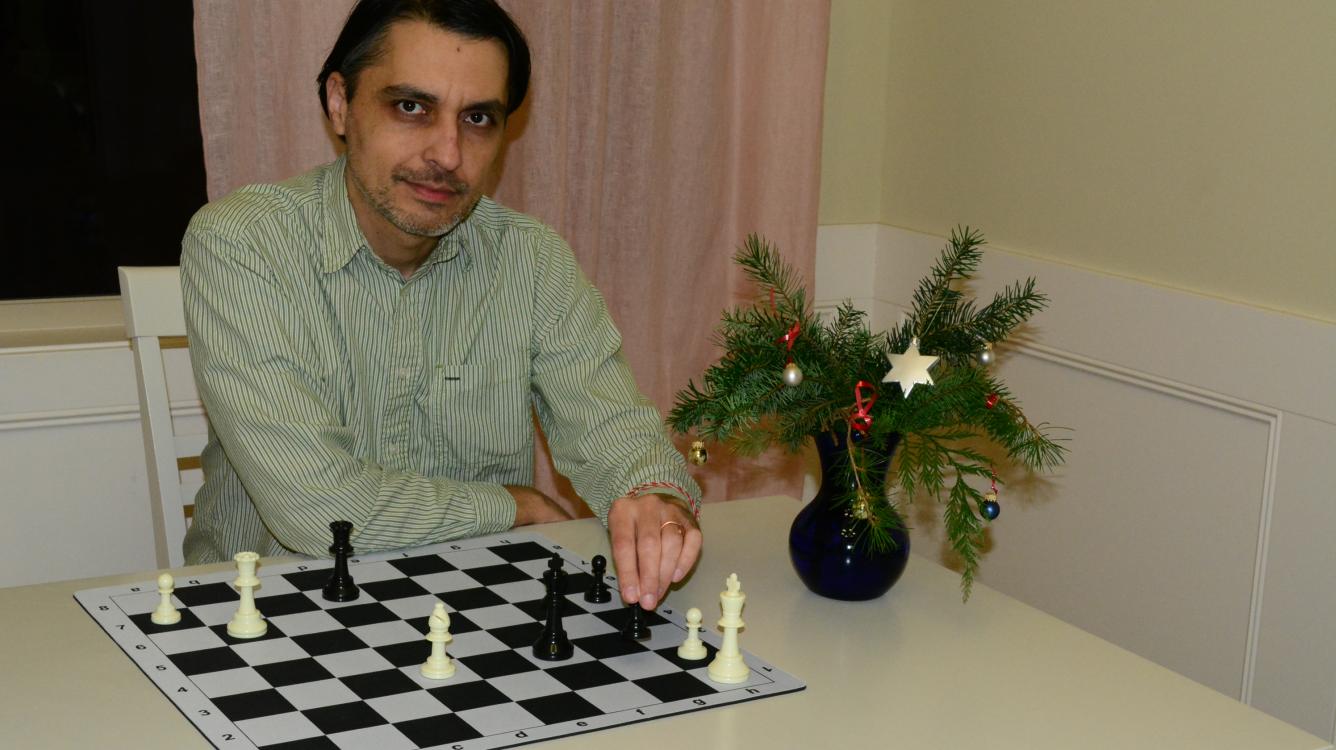
A Sample Coaching Game - Part 7
A Sample Coaching Game with a Student
(Part 7, final)
Below is a transcript from an actual coaching game that shows the richness of the ongoing discussion (literally on each move) between coach and student. A total of over 250 messages were exchanged to discuss important chess principles, key strategies and considerations, specific moves and how they all fit together, share relevant resources, etc.
The transcript is laid out in a series of blog posts, each covering a portion of the game with the relevant diagrams and discussions. Context is re-established at the start of each part.
Legend (on how to read the discussion and follow the unfolding chess game):
- [bold, larger font, cyan highlight] : the most recent move, based on the preceding discussion
- [bold, dark green] : broadly valid (beyond this particular game) chess principles and related advice
- white’s (coach’s) comments follow the letter “V”, while black’s (student’s) comments follow the letter “F”.
_valentin_ (2470) vs. phranck (1719)
(5 days per move)
http://www.chess.com/echess/game?id=48276872
Moves covered in previous parts:
- Part 1 (http://blog.chess.com/_valentin_/a-sample-coaching-game-with-a-student) - [1.c4 e5 2.Nc3 Nf6 3.Nf3 Nc6 4.g3 Bb4 5.Bg2 O-O 6.O-O e4 7.Ne1 Bxc3 8.dxc3 h6 9.Nc2 Re8 10.Bf4 d6 11.h3 Be6 12.b3]
- Part 2 (http://blog.chess.com/_valentin_/a-sample-coaching-game---part-2) - [12…a5 13.Qc1 Qd7 14.Kh2 Ne7 15.Nd4 d5 16.Nxe6 Qxe6 17.c5 b6 18.Be3 Nd7 19.cxb6 cxb6]
- Part 3 (http://blog.chess.com/_valentin_/a-sample-coaching-game---part-3) - [20.Qd2 Nf5 21.h4 Nf6 22.Bh3 b5 23.Bd4 Kh7 24.Qf4 g6 25.g4]
- Part 4 (http://blog.chess.com/_valentin_/a-sample-coaching-game---part-4) - [25…Nxd4 26.cxd4 Qe7 27.Rac1 Ra7 28.Rc5 b4 29.Rfc1 Kg7 30.Kg2 Rd8 31.Rc7 Rxc7 32.Rxc7 Rd7 33.Rc8 Ne8 34.Qb8]
- Part 5 (http://blog.chess.com/_valentin_/a-sample-coaching-game---part-5) - [34…Kf8 35.g5 hxg5 36.Bxd7 Qxd7 37.hxg5 Ke7 38.Qe5+ Kf8 39.Ra8 Qc6 40.Ra7 Kg8 41.Qe7 Qe6 42.Qxe6 fxe6 43.Rxa5]
- Part 6 (http://blog.chess.com/_valentin_/a-sample-coaching-game---part-6) - [43…Nd6 44.Ra6 Nf7 45.Rxe6 Kg7 46.Re7 Kf8 47.Rxf7+ Kxf7 48.Kg3 Ke6 49.Kf4 Kd6 50.f3 exf3 51.exf3 Ke6 52.Kg4 Kf7 53.f4 Ke6 54.f5+]
[ Continuing below after white's move 54.f5+ ]
V: The theme of 54.f5+ is a temporary pawn sacrifice in order to gain access to an important square. That theme is often seen in master-level games at the middle game phase, where pieces jockey for active positions. In the endgame, such as here, it likely leads to a zugzwang for black on the very next move. Are you familiar with zugzwang as a term and as an idea often applied in endgames (but not only)?
F: Yes, very familiar with zugzwang.
F: Ironic timing of chess.com posting this video on zugzwang. http://youtu.be/6SQKVbbtsfg
[54…gxf5+ 55.Kf4]
V: It's a common theme, especially in endgames, and it can be even more spectacular in middle games. There are a few famous games I've seen where it was masterfully used in middle games. I'll see if I can track those and send to you.
V: Check out those games with middlegame zugzwang (I knew the Nimzowitch game, but the other two are fascinating too): http://en.wikipedia.org/wiki/Immortal_Zugzwang_Game
V: Here's another recent example I remember well -- in the final position white has plenty of legal moves and the position seems superficially balanced, but indeed every move by white loses immediately. A masterful showing of Aronian: http://www.chessgames.com/perl/chessgame?gid=1556261
[55…Kf7 56.Kxf5 Kg7 57.Ke5 Kg6 58.Kxd5 Kxg5 59.Ke6 Kf4 60.d5 Ke4 61.d6 Kd3 62.d7 Kc2 63.d8=Q Kb2 64.Kd5 Kxa2 65.Kc4 Ka3 66.Qd1 Kb2 67.Kxb4 Ka2 68.Qd2+ Kb1 69.Kc3 Ka1 70.Qb2x 1-0]
F: Thanks for the good game and the coaching.
V: Thank you for playing! This was, as before, a game that could have gone both ways. You held the advantage for a bit after the opening, and white only managed to turn things around with the activation of the light bishop (via h3), to which black didn't find a good response. In all honesty, I also didn't at first realize the power of this idea for the bishop activation: I did it because it was the best I could see, and I was hoping that it would stabilize the game for white, while in reality it paid off even more handsomely.
V: As far as continuing the coaching, it will depend on your goals and desire for it. I am available, and it has been a pleasure for me. It has also been a nice challenge, technically in terms of finding and explaining strong moves and ideas -- you're a relatively strong player, so this is important as part of your learning. So I wish to thank you too for the value you've provided to this experience!
